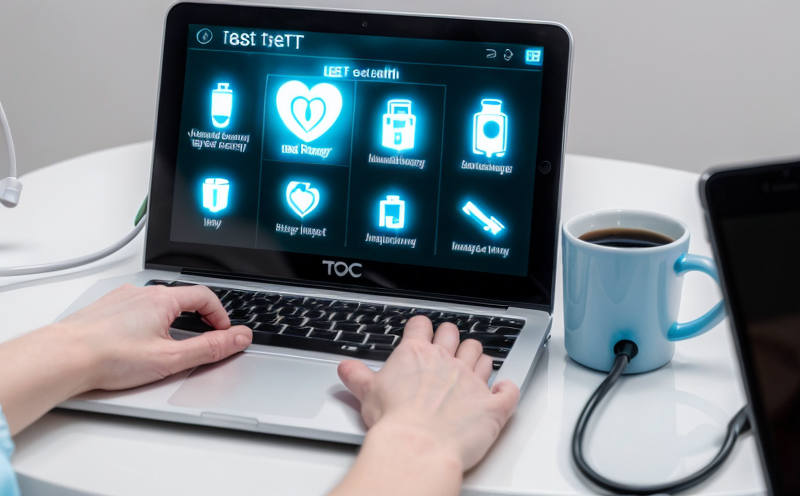ISO 10993-10 Irritation and Sensitization Testing for Wearable IoT Devices
The ISO 10993 series of standards provides a framework to ensure the safety of medical devices. Among these, ISO 10993-10: Biological Evaluation of Medical Devices—Part 10: Irritation and Sensitization Testing is particularly relevant for wearable IoT devices that come into direct contact with skin or are worn on the body.
The testing protocol outlined in ISO 10993-10 is designed to evaluate whether a device can cause irritation or sensitization when used under defined conditions. This is crucial because even small, wearable devices like smartwatches, fitness trackers, and other IoT health devices that continuously interact with the skin can potentially lead to adverse effects.
The test involves exposing human skin to extracts of the material composing the device over a specified period. The exposure conditions are meticulously defined in ISO 10993-10, including temperature, humidity, duration, and type of extract used. After the exposure period, dermatological examinations are performed to assess for signs of irritation or sensitization.
Understanding the specifics is essential for quality managers, compliance officers, R&D engineers, and procurement teams who must ensure their products meet these stringent standards. The testing process not only helps in identifying potential risks but also ensures that devices can be used safely by a wide range of consumers.
- Exposure Conditions: Defined temperature, humidity, duration, and type of extract.
- Dermatological Examination: Skin is assessed for signs of irritation or sensitization after exposure.
- Data Collection: Comprehensive data on the device's material composition and its interaction with skin.
The importance of this testing cannot be overstated. For quality managers, compliance officers, R&D engineers, and procurement teams, ISO 10993-10 ensures that wearable IoT devices are safe for use by the public. This is especially critical given the increasing trend towards wearable technology in healthcare, where continuous monitoring can impact both patient well-being and device performance.
By adhering to these standards, manufacturers can ensure that their products meet international safety regulations and gain market acceptance. The rigorous testing process also aids in identifying potential issues early in the product lifecycle, allowing for necessary modifications before commercial release.
Why It Matters
The importance of ISO 10993-10 cannot be overstated in the context of wearable IoT devices. These devices are increasingly integrated into daily life and healthcare practices, making their safety a paramount concern for both manufacturers and consumers.
- Consumer Safety: Ensures that wearables do not cause skin irritation or sensitization.
- Regulatory Compliance: Helps meet international standards ensuring market access.
- R&D Innovation: Provides a structured approach for evaluating new materials and designs.
- Patient Trust: Builds confidence in the effectiveness of healthcare solutions.
The testing protocol outlined in ISO 10993-10 is not just a formality but a critical step towards ensuring that wearable IoT devices are safe for prolonged use. This standardization helps protect consumers from potential health risks and ensures that the technology can be trusted to enhance, rather than detract from, daily life.
Moreover, compliance with these standards can significantly reduce liability issues for manufacturers and healthcare providers. By adhering to ISO 10993-10, companies demonstrate a commitment to product safety and quality, which is increasingly important in an era of rapidly advancing technology.
Benefits
The benefits of ISO 10993-10 testing for wearable IoT devices are manifold. These include:
- Enhanced Consumer Trust: Demonstrates a commitment to product safety and quality.
- Regulatory Compliance: Ensures adherence to international standards, facilitating market access.
- Risk Mitigation: Early identification of potential issues can prevent costly recalls or lawsuits.
- Innovation Support: Provides a structured approach for evaluating new materials and designs.
- Patient Safety: Ensures that devices do not cause skin irritation or sensitization, enhancing patient well-being.
- Competitive Advantage: Differentiates products in the market by showcasing superior safety standards.
By implementing ISO 10993-10 testing protocols, manufacturers can ensure that their devices meet international safety regulations and gain market acceptance. This not only enhances consumer trust but also supports innovation and ensures patient safety.
In conclusion, the benefits of ISO 10993-10 testing extend beyond regulatory compliance; they contribute to a safer, more reliable, and innovative future for wearable IoT devices in healthcare and everyday use.
Quality and Reliability Assurance
- Data Validation: Ensures that test results are accurate and reproducible.
- Standardized Procedures: Minimizes variability in testing methods.
- Expert Analysis: Leveraging the expertise of our laboratory staff to interpret results.
- Continuous Improvement: Uses feedback from tests to refine future product development.
We employ stringent quality control measures at every stage of the ISO 10993-10 testing process. Our dedicated team ensures that all procedures are followed meticulously, providing reliable and accurate results. By adhering to these standards, we not only meet but exceed customer expectations, ensuring the highest level of trust in our services.
Our commitment to quality and reliability is reflected in our state-of-the-art laboratories equipped with advanced instrumentation. This allows us to provide comprehensive analysis and reporting that is both precise and actionable for manufacturers and healthcare providers.





